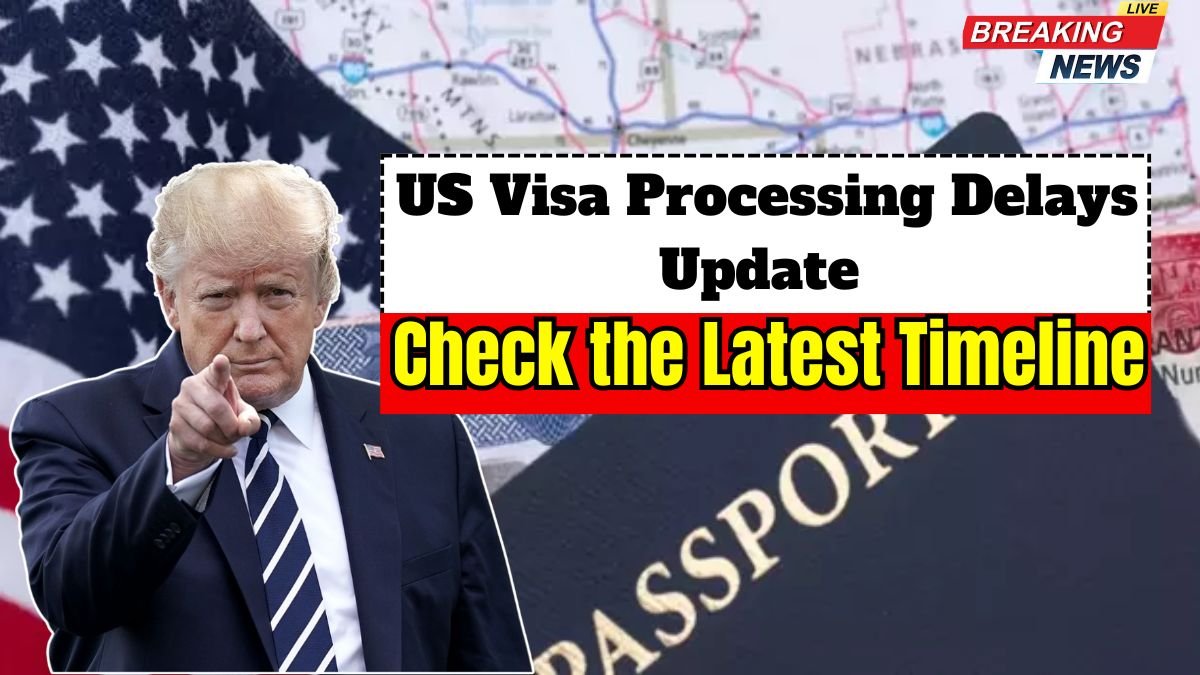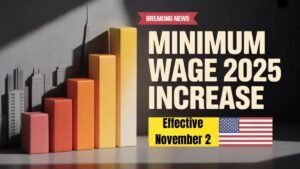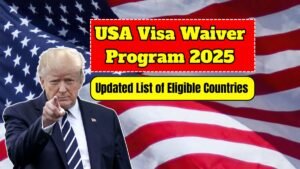It is very crucial to you in case you are planning to travel to the United States to study, work, or visit your family. The latest update of the US Visa Processing Delays has now been released in November 2025. The U.S. Embassy and Consulates have already provided a new schedule, and it is certainly evident that there are still long queues for setting appointments, conducting interviews, and receiving the visas.
This is causing a backlog not only for students and workers but also for tourists and the family visit visa applicants. We shall see why there are such delays, which areas are most impacted, and what to anticipate in November 2025.
Why are there delays in visa processing?
The US visa system has been under immense pressure for the past few years. After the COVID-19 pandemic and the resumption of international travel, millions of applications accumulated in a backlog.
Now, even in 2025, this backlog has not been completely cleared. In addition:
- High Demand: The desire to go to the US for studies and work has increased more than ever before.
- Poor Resources: Lack of personnel and appointment slots at the embassies.
- Security Checks: There are further checks that are carried out on the applications of some countries.
- System Upgrade: The U.S. State Department had introduced a new digital visa tracking system, which resulted in some delays.
Owing to all these factors, there is an average of up to 30% delay being witnessed in the visa processing time.
Which types of visa are the most impacted?
The following types of visa appear to be the most delayed according to the latest report of November 2025:
| Visa Type | Average Wait Time (November 2025) | Status |
|---|---|---|
| F-1 (Student Visa) | 70 to 90 days | Limited interview slots |
| H-1B (Work Visa) | 90 to 120 days | Administrative review pending |
| B-1/B-2 (Tourist/Business) | 100 to 150 days | Significant appointment delays |
| L-1 (Intra-company Transfer) | 60 to 90 days | Moderate delay |
| J-1 (Exchange Visitor) | 45 to 60 days | Relatively faster processing |
This table demonstrates clearly that student and tourist visa holders are the longest-waiting groups.
New Processing Timeline for November 2025
U.S. The U.S. Department of State has released an updated timeline for November 2025, reflecting country-specific and category-wise changes.
The new processing timeline is as follows:
- India: Appointment slots for F-1 visas are now booked until the first week of December 2025.
- Pakistan and Bangladesh: Waiting times for work visas may extend until January 2026.
- Mexico and Brazil: An average wait of 80 to 100 days for tourist visas.
- China and Japan: Processing for business visas has returned to a somewhat normal pace.
- U.S. embassies have advised applicants to file an “Emergency Appointment Request” only for essential travel reasons.
Significant Student Predicament.
The most affected delays are on students (F-1 visa applicants). Thousands of students are already in university, yet they are not given their visas. The dates of interviews in most instances have been fixed after the semester has started.
The population of Indian students in the US is on the rise each year, and by 2024, the Indian student population is expected to cross 300,000 students, and it will only be rising in 2025. Thus, the supply has been much less than the demand of the visa slots.
The U.S. Embassy has advised students to:
- Apply early (at least 4-5 months in advance).
- Complete the DS-160 form with the appropriate information.
- Changes of interview dates should be avoided, provided there is a need to do so.
We are putting situation-based work visa (H-1B, L-1) holders.
Administrative processing on work visa holders, particularly the H-1B visa professionals, is currently causing delays.
In 2025, numerous tech firms sponsored more H-1Bs, which further overwhelmed the USCIS workload. Many of the applicants who pass the interview find themselves languishing in the Administrative Processing stage, which can take between 60 and 90 days to complete even after passing the interview.
The case with L-1 visas is relatively more favorable, since this type of application is directly supported by the company and the process of verification is completed within less time.
Lengthy queues for tourist visas and family visas.
- People who want to go to their relatives or friends in the US also experience long queues. Visas of B-1/B-2 (Tourist/Business) can be issued after 6 months in selected cities.
- Tourist visa bookings are done up to April 2026 at New Delhi, Mumbai, Chennai, and Hyderabad.
- However, the US has extended the “Interview Waiver Program” to some countries, allowing previous visa holders to obtain a new visa without an interview by applying online
Online Update and Tracking System.
On the U.S. Visa Status Portal, the applicants are now able to follow their visa status in real time. The new system, which will be in effect in 2025, demonstrates:
- Application stage (Received, In Review, Approved).
- Scheduling and/or cancelling of interview slots.
- It also has SMS and email notifications.
- Although such a process can still be slow, transparency is now much better.
US Government Reform Efforts
The U.S. State Department has taken several steps to address this crisis:
- Recruitment of additional staff: deployment of new interview officers at embassies.
- Increased visa appointment hours: interviews are now also conducted on Sundays in some locations.
- Expansion of digital processing: testing has begun on an e-visa system.
- Backlog reduction program: older applications are being processed on a priority basis With such reforms, processing times will go back to normal by the start of 2026.
Some of the key applicant tips.
In 2025, when you apply for the US visa, remember these 5 things:
- Apply early: the sooner you apply, the more slots you will be given.
- Always have your documents ready: wrong documents or half-done ones are the greatest source of so much wastage of time.
- Give correct information: any mistakes in the form may put your case on administrative hold.
- Monitor your appointment: canceled slots are reopened.
- Take another embassy: you could get previous appointments elsewhere.
Conclusion—Process Gradually Returning to Normal
Although delays in US visa processing still persist, the corrective measures taken by the US government are encouraging. Students, professionals, and travelers will have to be patient, as the processing timeline is gradually returning to normal This November 2025 update indicates that travel to the US is currently on a “slow but steady” path. Those who have already applied do not need to worry simply track your application in a timely manner and keep the necessary documents ready.
FAQs
Q1. Why are US visa processing times delayed in November 2025?
A. Visa processing delays are mainly due to high application volumes, staffing shortages at US embassies, and ongoing backlog clearance after the COVID-19 pandemic.
Q2. Which visa categories are most affected by these delays?
A. Student visas (F-1), work visas (H-1B), and tourist visas (B-1/B-2) are experiencing the longest wait times — ranging from 70 to 150 days depending on location.
Q3. How can I check my US visa status online?
A. You can track your application through the U.S. Visa Status Check portal on the official State Department website using your DS-160 confirmation number.



